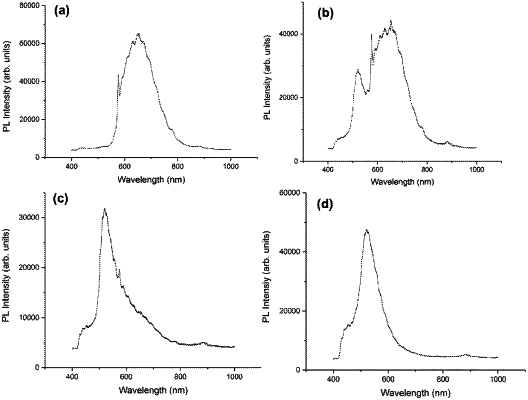| CPC C09K 11/65 (2013.01) [C01B 32/28 (2017.08); C30B 1/02 (2013.01); C30B 29/04 (2013.01)] | 35 Claims |

|
1. A method of processing diamond particles to form a plurality of luminescent diamond particles exhibiting luminescence in specific selected spectral ranges, comprising:
a. providing diamond particles with sizes below about 100 microns having a surface and a diamond lattice and containing a plurality of impurity atoms in the diamond lattice;
b. irradiating the diamond particles with high energy species in a dose of about 1×1010 species/cm2 to 1×1021 species/cm2;
c. annealing the irradiated diamond particles in at least one of an inert gas environment, vacuum, or hydrogen environment at a target temperature in the temperature range from about 1400° C. to about 2200° C. to form luminescent diamond particles with emission in the specific selected spectral range where the specific spectral range is controlled by the temperature and duration of the annealing process and the irradiation dose;
d. purifying the irradiated and annealed diamond particles to remove sp2 carbon from the surface of the diamond particles; and
e. where the luminescence is excited by electromagnetic radiation in the wavelength range comprising at least one selected from the group consisting of optical and X-ray radiation.
|